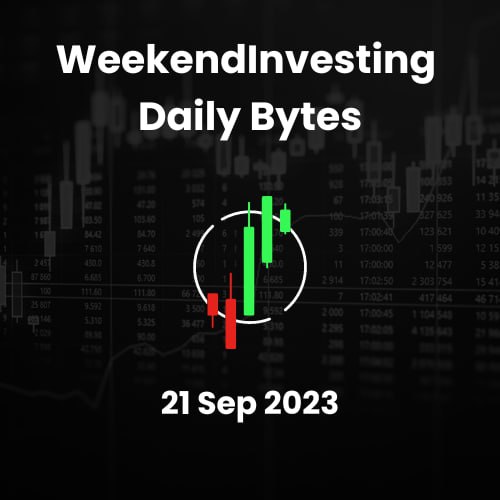The recent market sell-off has taken investors by surprise, with the markets losing significant ground from their recent highs. On 21 September, the markets saw a tough day, with the Nifty giving up almost 500 points over the course of three sessions. The primary driver behind this sell-off was the more hawkish-than-expected tone of the FOMC meet, where rates were paused but the outlook for inflation and interest rates remained sticky. This has led to a considerable amount of Foreign Institutional Investor (FII) sales in the market.
Nifty
The market’s current state suggests that the previous breakout above the 20,000 level was a trap for a significant amount of investment capital. Now, the market needs to find another consolidation point, although it is uncertain whether it will bottom out at 19,000 or somewhere around the 19,600 support level.
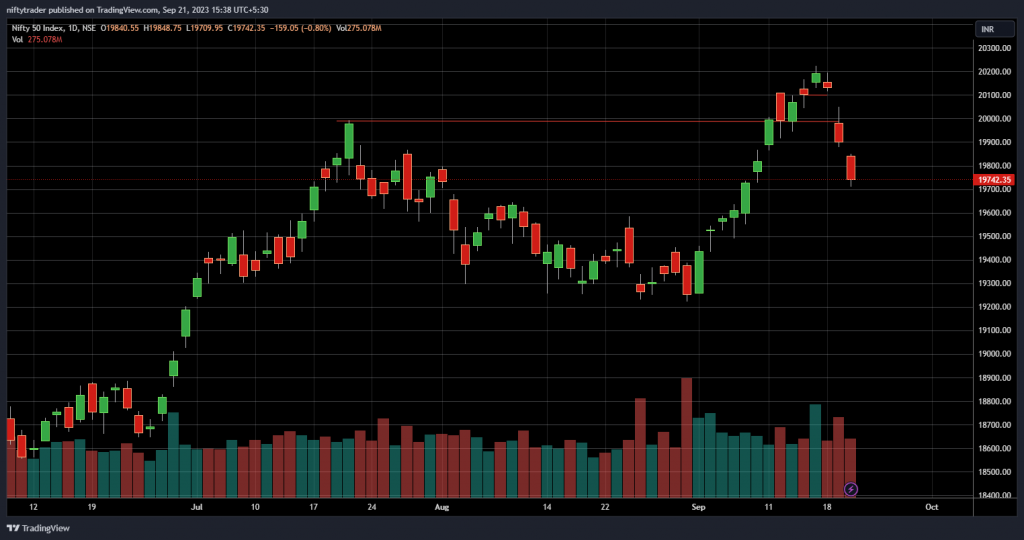
Nifty Heat Map
Examining the market, it is evident that the overall sentiment is negative, with only a few pockets of green, including Infosys. Infosys has seen a boost in its stock price due to an upcoming tie-up with Nvidia, utilising AI-based technology. However, other major players in the market, such as TCS, HCL, and Tech, are all following the downward trend set by Nasdaq, which was down one and a half percent the previous day.
The banking sector has taken a significant hit in the market. HDFC Bank, ICICI Bank, State Bank, IndusInd Bank, and Kotak Bank all experienced a drop of one to two percent. The auto industry also suffered, with companies like Maruti, Mahindra, and Mahindra seeing a three percent decline. Other major sectors, including Ultra Semco, Grasim, Cipla, Reliance, and ITC, experienced similar losses.
Looking at the broader market, it is evident that no sector was spared. Banking, autos, and real estate were hit the hardest, with PSU banks down 2.3 percent, autos down 1.7 percent, and real estate down 1.2 percent. The only sector showing some resilience was metals, which performed relatively better compared to others.
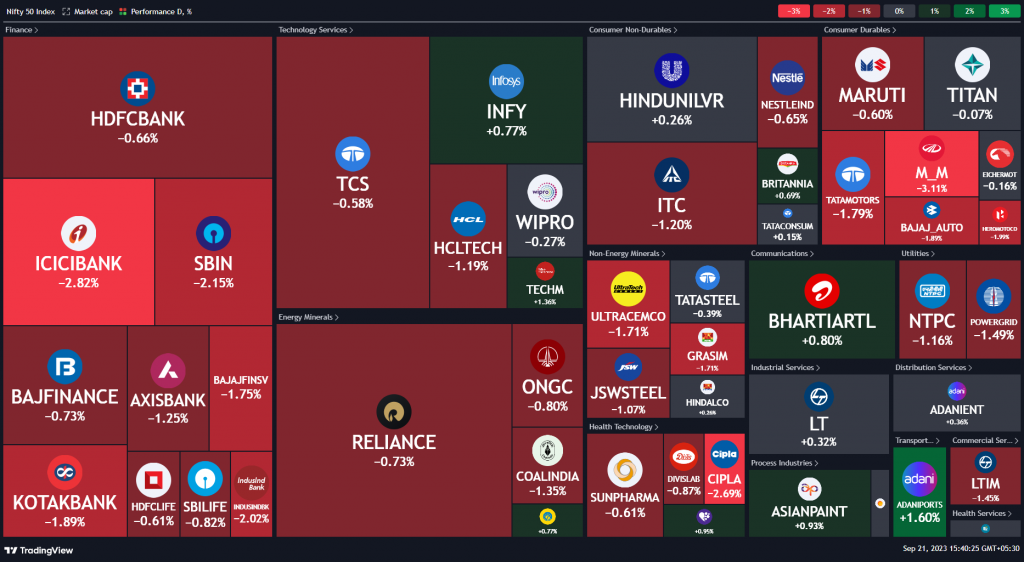
Mid & Small Cap
The mid-cap and small-cap segments of the market are also suffering. The recent correction has brought these segments back to the closing levels of the previous Tuesday, which was a highly volatile day. The current bounce in the market is now challenging those closing lows, indicating potential further decline. If the market continues to break below the 39,600 range, it is likely that more pain awaits investors.
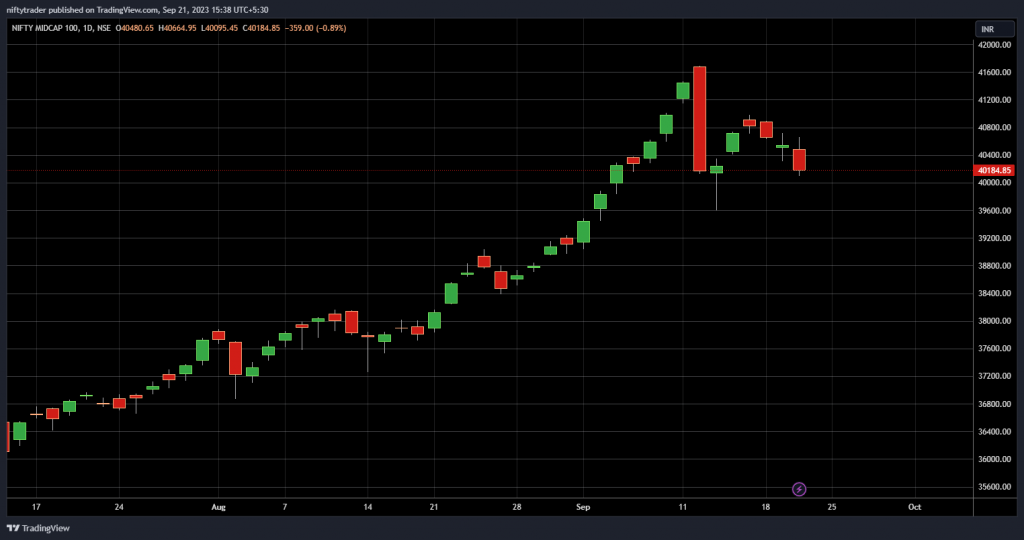
Additionally, the small-cap 250 index has also experienced a major collapse since last Tuesday, approaching neck-to-neck with the closing lows near 12,000. If the index starts closing below this level, there could be additional pressure, pushing it toward the pivot point near 1,500.
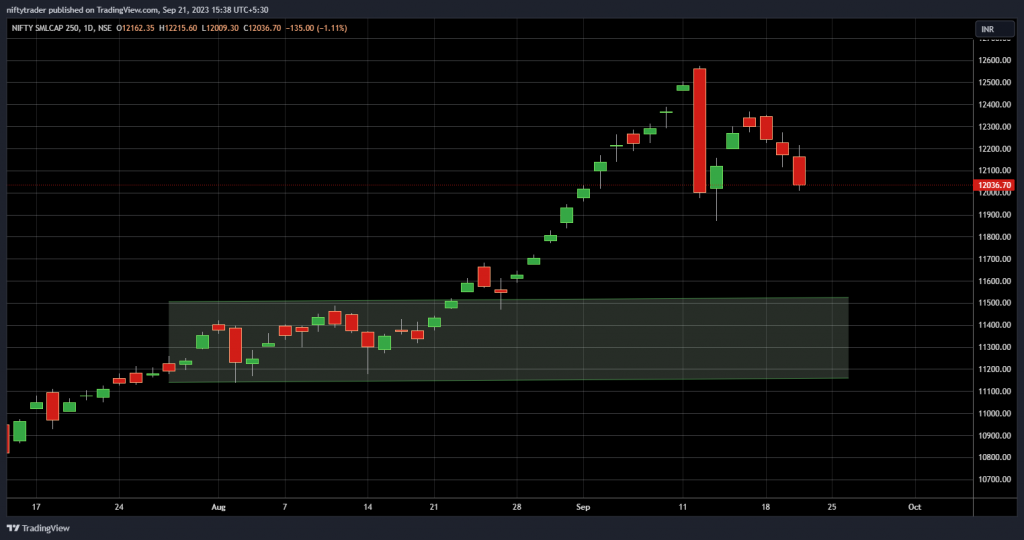
Bank Nifty
The breadth of the market is not showing promising signs, with the Nifty Bank leading the market downturn. Historically, banks have tended to be the market leaders during sell-offs, and the sharp decline after a double top formation surpasses expectations. Currently, the Nifty Bank is trading around the same level as the consolidation range of the past three to four months, which suggests that further consolidation may be on the horizon. However, if the Nifty Bank falls below the crucial support level of 43,400, the situation could become quite bearish.
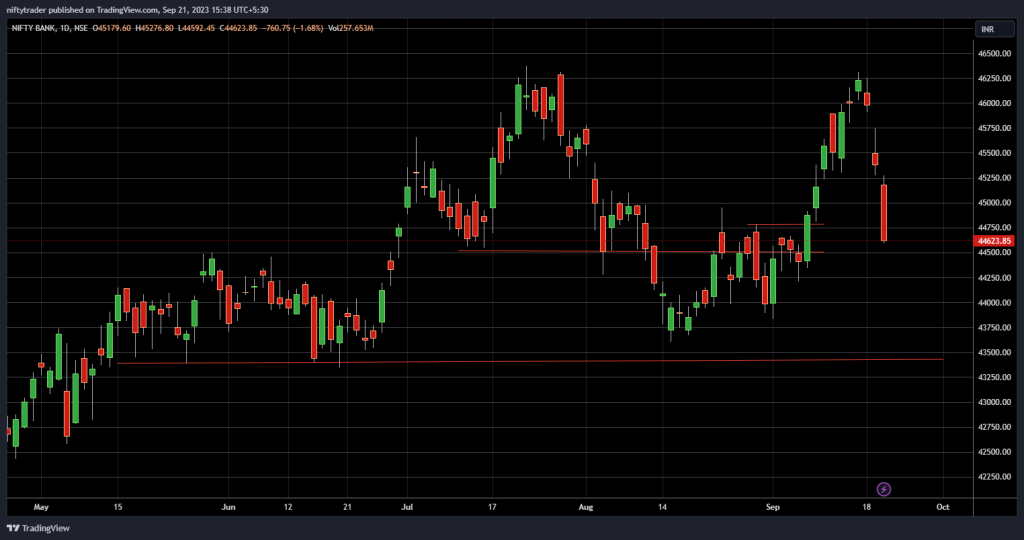
US 10 Year Yield
So, what are the factors driving this market decline? The primary reason is the surge in the US government ten-year bond yield. We are now witnessing a 15-year high bond yield, which is shifting the dynamics of the global market. For the past decade and a half, the world economy has relied heavily on low-interest rates, leading to massive borrowings for companies, homes, and retail loans. However, these low rates are becoming unsustainable. Individuals who took loans at 3 percent interest in their 30s are now facing mortgage rates of 7 to 8 percent. These drastic changes in interest rates are causing immense pain in both retail and institutional sectors, as it disrupts the financial structure that many organisations have been built upon.
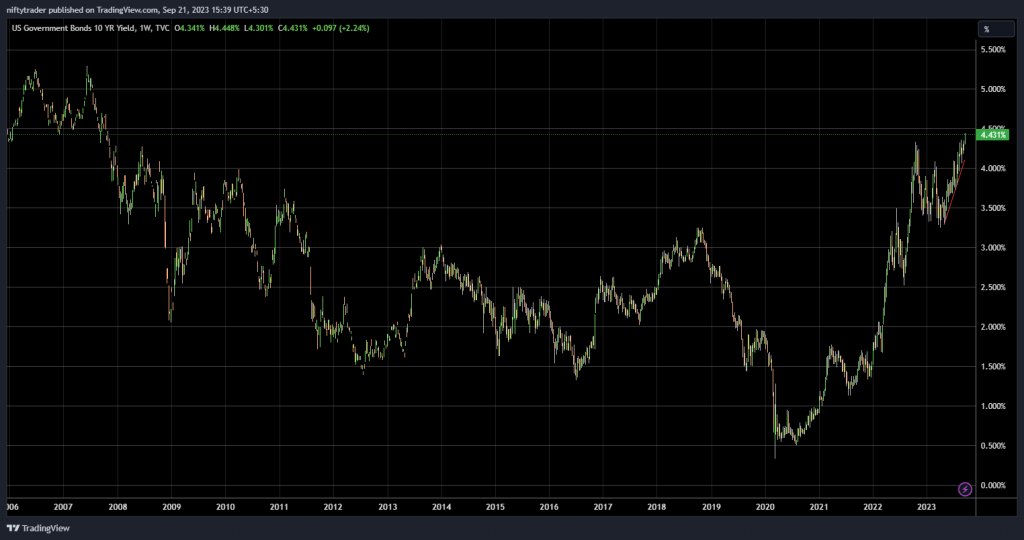
Download the WeekendInvesting App

If you have any questions for us. please write to us on support@weekendinvesting.com. You can also get on a 1-1 meeting with us should you need more clarity about the strategies or process.

